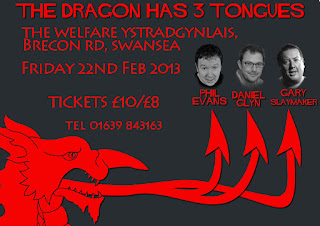
The Battle of Mortimers Cross took place on 2nd February 1461, during the War of the Roses (1455 - 1485)
Summary of The War of the Roses and Welsh involvement at the Battle of Mortimer's Cross February 2nd 1461;
During the Wars of the Roses, Wales was generally a Lancastrian stronghold, while the Welsh Marches, particularly the Mortimer lordships, were Yorkists.
In around 1450 King Henry VI of England began suffering from cripling bouts of insanity which led to the formation of a Council of Regency headed by Richard, Duke of York who was named Lord Protector. Recovering in late 1454, Henry resumed the throne and efforts commenced to reduce York's power. In retaliation York and Richard Neville, Earl of Warwick marched on London with the goal of removing the king's councilors. They won a victory at St Albans in May 1455 capturing Henry VI and York resumed his post as Lord Protector.
The following year Henry VI returned to health and regained the throne but in 1459 York, Warwick and Warwick's father, Richard Neville, Earl of Salisbury, renewed military action against the king, and there followed a number of battles, culminating in the battle of Northampton in 1460 where Henry VI was again captured and York announced his claim to the throne. However a compromise was reached through the Act of Accord which stated that York would be Henry VI's successor.
Unwilling to see her son, Edward of Westminster (son of Henry VI and Margaret of Anjou) disinherited, Queen Margaret raised an army and defeated the Yorkist forces at Wakefield killing York and Salisbury. Sir Owen Tudor and his son, Jasper Tudor, Earl of Pembroke's Welsh armies marched east, seeking to unite with Margaret's main Lancastrian army but Yorks son (the future Edward IV), who was in the Welsh Marches, raised an army and assumed a position near Mortimer's Cross (near Wigmore, Herefordshire) in an effort to prevent the Lancastrian armies uniting.
On February 2, 1461 Edward engaged the Welsh armies in battle, who although gaining the early advantage, were defeated. Retreating from the defeat, Pembroke and the Earl of Wiltshire succeeded in escaping the Yorkist pursuit, but less fortunate was Sir Owen Tudor who was captured at Hereford. and executed two days later. In the aftermath of the Battle of Mortimers Cross, despite suffering a reverse at the Second Battle of St Albans, Edward was proclaimed king on March 4 and defeated the Lancastrians at the Battle of Towtown, which led to a long lull in the fighting. Although the Wars of the Roses would continue until Sir Owen Tudor's grandson Henry Tudor (Henry VII) defeated Edward IV's brother, Richard III at The Battle of Bosworth in 1485 and married Elizabeth of York, thereby uniting the two warring houses.
As a matter of interest, on the morning of the Battle of Mortimers Cross, Edward IV observed a rare meteorological event known as a parhelion, when it appears that there are three suns in the sky, which he took to be a good omen.


Candlemas is celebrated on 2nd February.
This Christian festival is thought to originate from Imbolc, the Celtic festival celebrating the arrival of Spring. It is known in Wales as Gŵyl Fair y Canhwyllau ("Mary's Festival of the Candles") and was derived from the ceremony of blessing the candles that were be carried in processions, by mothers of babies born during the previous year.
Other Candlemas traditions in Wales;
* In Carmarthenshire, it was customary for kitchen windows to be illuminated with candles.
* It was another custom at the onset of the dark autumn and winter evenings, for the mistress of the farm to ceremoniously give "y forwyn fawr", the head maid, a candle for her to use in the out building during a period called "amser gwylad". The candle was then handed back on February 2nd when the light had increased enough for the candles to be dispensed with.

Born this day 1785, in Dowlais
Sir Josiah John Guest, engineer and entrepreneur. Guest inherited a share in the Dowlais Iron Company and became sole owner in 1815. By his death in 1852, it was the largest producer of iron in the world. He was a Fellow of the Royal Society, a Member of the Institution of Civil Engineers and the first chairman of the Taff Vale Railway. He also became the first MP for Merthyr Tydfil in 1832.

Born on this day 1940 in Edmonton, London.
Sir David John White, better known by his stage name David Jason.
David Jason's father was a porter at Billingsgate Fish Market and his Welsh-born mother, Olwen Jones, worked as a charwoman. She gave birth to twin boys, but David's twin brother died during childbirth.
Jason has become one of Britain's most famous and respected actors, with many notable performances including, Only Fools and Horses, A Touch of Frost, The Darling Buds of May, Open All Hours, Dangermouse, The Wind in the Willows and Count Duckula
In 1990, he temporarily gave up working, to care for his longtime partner Myfanwy Talog, the Welsh actress who subsequently died of cancer at the age of 49.

On 2nd February 1876, at a meeting at the Wynnstay Arms Hotel in Wrexham, the Football Association of Wales was founded, making it the third-oldest national association in the world.

Born this day 1945, in Ystrad Rhondda.
Maurice Richards, former Wales and Lions rugby union international and Wales and Great Britain Rugby league international, who in 1969, scored four tries in an international against England.

On 2nd February 1963, Cymdeithas yr Iaith Gymraeg (The Welsh Language Society) held its first protest, in the form of a sit-down at Trefechan Bridge, Aberystwyth.

Born on this day 1947 in Cardiff.
Frank Hennessy - folk singer and radio presenter.

Joan (Siwan) the "Lady of Wales", born in c.1191, was the illegitimate daughter of King John of England and the wife of Llywelyn Fawr (Llywelyn the Great). She died on 2nd February 1237.
Little is known of Joan's early life but she seems to have spent part of her childhood in France, as King John had her brought to England from Normandy in 1203 in preparation for her wedding to Llywelyn. They married some time between December 1203 and October 1204 and Llywelyn reputedly built the Church of St Mary, Trefriw, Conwy for her. Joan and Llywelyn had at least two children together: Elen ferch Llywelyn and Dafydd ap Llywelyn.
In 1211 King John invaded North Wales and Joan acted as a negotiater between Llywelyn and her father and later in 1216 when Henry III came to the throne, Joan continued to plead Gwynedd’s cause to the English court.
At Easter 1230, William de Braose, who was Llywelyn's prisoner at the time was discovered with Joan in the royal bedchamber. Llywelyn had de Braose hanged and placed Joan under house arrest for twelve months, although she was subsequently forgiven by Llywelyn, and restored to favour.
Joan died at the royal home at Abergwyngregyn in 1237 and Llywelyn founded a Franciscan friary nearby, on the seashore at Llanfaes in her honour. Her stone coffin can still be seen in Beaumaris parish church, Anglesey.








